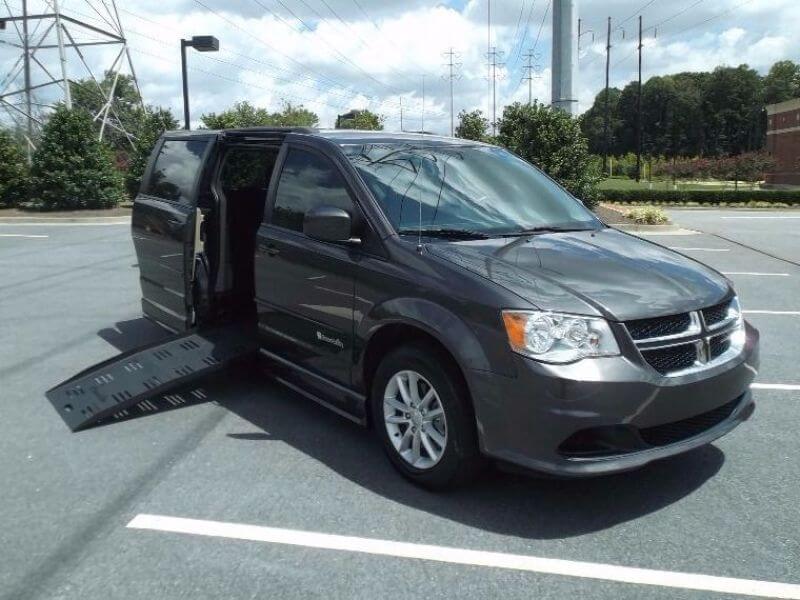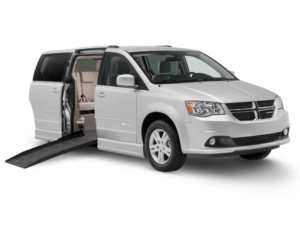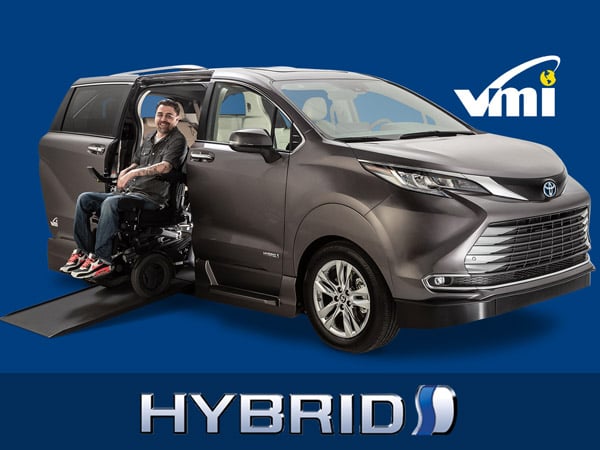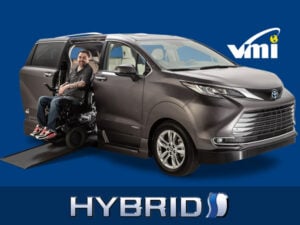Converting a wheelchair van for accessibility is an excellent way to maintain mobility and facilitate a broader sense of freedom. However, there are decisions you need to make in order to select the vehicle that best suits your lifestyle. In this article, the first in a four-part series on the subject, we’ll detail the types of wheelchair van conversions you can choose from and outline the pros and cons of each possibility.
The most basic decision you need to make in modifying a vehicle for accessibility relates to the door used for wheelchair entry and exit. Will the wheelchair user enter through the side door or the rear hatch of the vehicle? If the user needs to exit from the side door, they should choose a side-entry wheelchair van. If they prefer to exit from the rear hatch, they should look into a rear-entry handicap van.
Each entry type has its own benefits and drawbacks. The right selection will depend on your particular circumstances. Here are a few things to keep in mind as you choose the right conversion method for you:
Accessing the Vehicle
How will you be entering and exiting your wheelchair van? In your garage or on your driveway, do you have adequate space next to the vehicle to enter and exit the van? If your space is narrow, you may consider the rear-entry. If you have the room in your garage, being able to exit the side keeps you out of the elements in bad weather.
Consider where you typically park the vehicle away from home. Rear-entry wheelchair vans require you to enter and exit the vehicle in driving lanes in parking lots. With more locations providing wheelchair-accessible parking with extra “blue space”, side-entry vans can be safer in busy parking lots. Unfortunately, there isn’t any guarantee that a space will be available – or that someone with no knowledge of how an accessible van parks will place their vehicle too close to fully deploy the ramp.
Price Differences
Side-entry and rear-entry conversions are both significant investments due to the extensive modification to the chassis. These changes (which include modifications to the frame, fuel system, brake lines, and extensive bodywork) should be crash tested to meet all federal motor vehicle safety standards. Here is a link to a list of companies who have crash-tested their vehicles. A side-entry conversion is typically more expensive because the modifications are more extensive. The floor is lowered across the entire vehicle requiring significant modifications.
Side-Entry Conversions
Despite the higher cost, the side-entry conversion is more common than the rear-entry type. People choose this option because it offers many potential benefits not available with a rear entry. Side-entry handicap vans offer more flexibility for the user, and in most cases, increased freedom and self-reliance. There are also more powered ramp options with side-entry access.
Here are a few of the pros and cons that come with a side-entry wheelchair van:
Benefits
- More Seating Options: Side-entry wheelchair vans offer more flexibility in terms of floor plan configurations. Users can choose how they want the vehicle seating structured, allowing for increased customization. As such, a van can be set up to fit almost any purpose or lifestyle.
- Front-Seating, Including Driving: Along with increased floor-plan flexibility, a side-entry conversion allows wheelchair access to the front of the vehicle. Easily removable front seats (driver & passenger) allow wheelchair users to ride in the front of the van without having to transfer to another seat, giving them the ability to drive the vehicle from their chair or sit next to the driver.
- Easier Loading/Unloading: The side-entry conversion offers more room to maneuver the wheelchair around inside the vehicle. This allows the wheelchair user to enter and exit the vehicle facing forward. In a rear-entry handicap van, the user must exit backing up.
- Multiple Ramp Options: Along with more natural ingress/egress, a side-entry wheelchair van also provides multiple ramp options, including manual and power, fold-out ramps and in-floor ramps that stow under the van once the door is closed.
- Better Resale Value: The side-entry conversion is more expensive than the rear-entry type (which we’ll discuss in more detail in a bit). However, the vehicle retains its value better. In part because side-entry systems are more popular, these vans have a higher resale value than the rear-modification version.
Disadvantages
- More Expensive: Cost becomes a concern with side-entry conversions. Because the floor needs to be lowered, the price of a side-entry conversion typically runs between $24,000 and $35,000. This is significantly more expensive than the rear-entry option, which usually costs somewhere between $15,000 and $22,000.
- Parking: Side-entry vehicles require room next to the van to deploy their ramps. This becomes difficult in a busy parking lot. As such, these vans aren’t able to park in just any parking spot. They need areas with the appropriate space on the side. As a result, driving a side-entry wheelchair van can make parking more complex.
- Need for a Wider Driveway: Parking lots aren’t the only place side-entry vans run into trouble. Parking in a driveway or garage becomes more complicated as well, as the vehicles need added space on the side for ramp deployment. As such, they require a wider driveway or garage area for loading and unloading, which could create a major difficulty for some potential users.
Rear-Entry Conversions
Rear-entry wheelchair vans have an obvious cost-benefit. Beyond this, the vehicle itself is easier to drive and (especially) easier to park, giving the van more range. However, the lower cost and easier drivability come with tradeoffs. Wheelchair users can’t actually drive these vehicles without transferring out of their wheelchair. At the same time, the vans come with limited space and an awkward exit procedure.
Here are the pros and cons that come with rear-entry wheelchair vans:
Benefits
- More Affordable: The biggest advantage of these conversions comes in the form of affordability. As we’ve discussed, these alterations can cost significantly less than the side-entry option (up to half the price in some instances).
- Regular Parking Options: Because of changes necessary to perform a side-entry conversion, those vehicles can’t operate in certain parking spots. This problem isn’t present with the rear-entry type. Instead, these vans are able to park in any parking lot spot available to an unconverted van (though there is an issue with parallel parking, which we’ll discuss in a bit).
- Wheelchair User Situated in the Middle of the Vehicle: Rear-entry handicap vans can maintain the center seats, allowing the wheelchair user to be located between them. This provides a better attendant opportunity to sit next to the person in the chair.
- More Standard Seats: With the option of a fold-down rear bench, and the ability to maintain the center seats, rear-entry wheelchair vans provide more seating positions inside the vehicle for larger families.
Disadvantages
- Drivers Required to Transfer: Wheelchair users aren’t able to access the front of the vehicle in a rear-entry conversation. As a result, wheelchair users also aren’t able to drive without adding a specialized transfer seat to the driver position.
- Awkward Exiting: Leaving a rear-entry van can often lead to an awkward and frustrating experience. The wheelchair user must go out backward and into the driving lanes of parking lots.
- Limited Trunk Space: Because of the technical requirements for the rear-entry conversion, the space inside the vehicle is taken up by the placement of the wheelchair ramp (which, remember, sits in the middle of a vehicle). As a result, there’s a lack of room in the van, eliminating trunk space.
- Difficult Parallel Parking: The rear-entry model is less suited to parallel parking. Because the vehicles involve exit and entry from the back, it isn’t practical in many city environments. Or, the wheelchair user is forced to exit or to enter the vehicle in traffic, outside of a secure parking spot.
Wheelchair van conversions offer an excellent opportunity for wheelchair users to gain mobility and expand their autonomy. Whether you choose a rear or side-entry modification will depend on your unique lifestyle and mobility needs. By weighing the pros and cons, you can select the best option for you.

Find your perfect Wheelchair Van
Select from thousands of wheelchair vans for sale from hundreds of nationwide dealers
The Mobility Resource has one of the largest selections of Dodge, Toyota, Chrysler, Honda, Ford, Chevrolet wheelchair vans













Tweet
Share https://www.themobilityresource.com/blog/post/wheelchair-van-conversion-types/